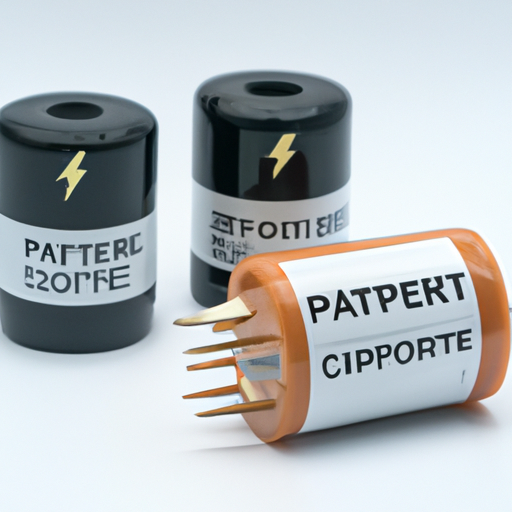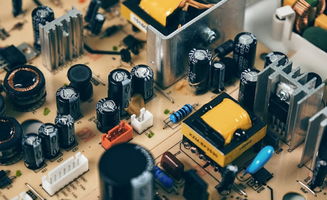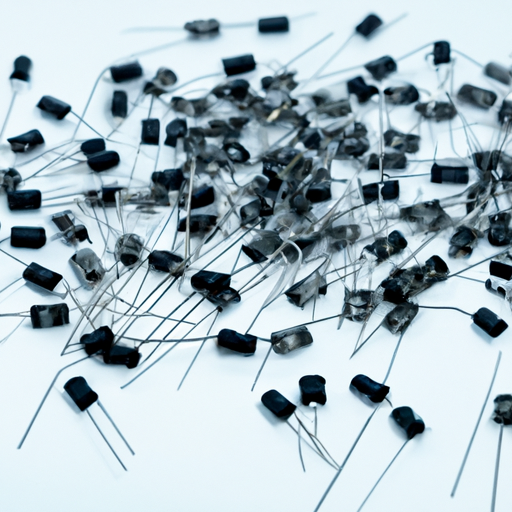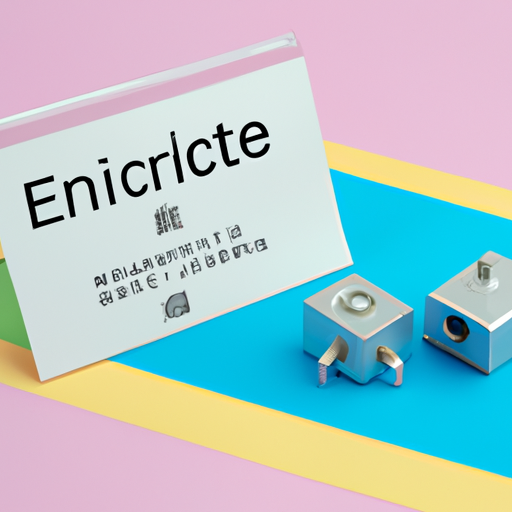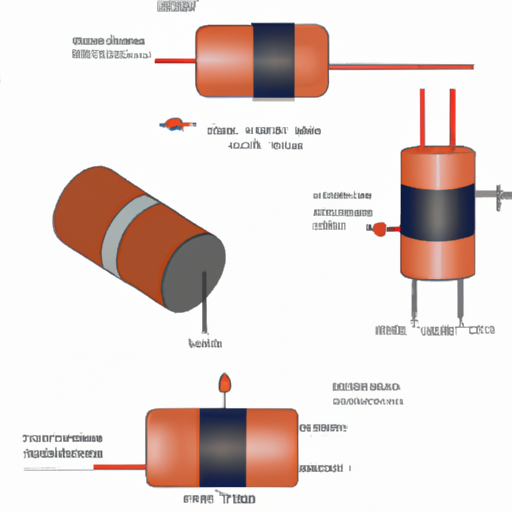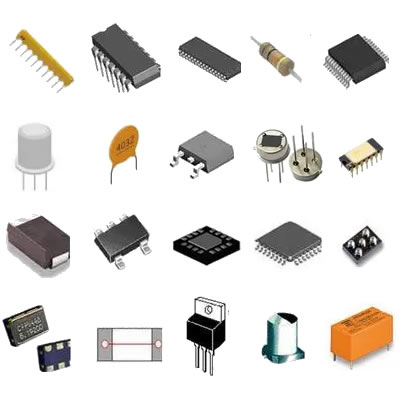What are the product characteristics of capacitor specifications?
What are the Product Characteristics of Capacitor Specifications?
I. Introduction
Capacitors are fundamental components in electronic circuits, serving as energy storage devices that can release energy when needed. They play a crucial role in various applications, from power supply filtering to signal processing. Understanding capacitor specifications is essential for engineers and designers to select the right components for their projects. This blog post will delve into the product characteristics of capacitor specifications, providing insights into their importance and relevance in electronic design.
II. Basic Capacitor Characteristics
A. Capacitance
Capacitance is the primary characteristic of a capacitor, defined as the ability of a capacitor to store electrical charge. It is measured in Farads (F), with common subunits including microfarads (µF) and picofarads (pF). Capacitors can be categorized into fixed and variable types. Fixed capacitors have a set capacitance value, while variable capacitors allow for adjustment, making them useful in tuning applications.
B. Voltage Rating
The voltage rating of a capacitor indicates the maximum voltage the capacitor can handle without breaking down. This specification is critical for ensuring the reliability and safety of electronic circuits. The breakdown voltage is the point at which the dielectric material within the capacitor fails, leading to potential short circuits or component damage. Designers typically incorporate safety margins into their designs, selecting capacitors with voltage ratings significantly higher than the maximum operating voltage.
C. Tolerance
Tolerance refers to the permissible variation in capacitance from the specified value. It is crucial in applications where precise capacitance is required. Common tolerance values include ±5%, ±10%, and ±20%. A tighter tolerance is often necessary in high-precision applications, while looser tolerances may suffice in less critical circuits. Understanding tolerance helps engineers select capacitors that meet the specific needs of their designs.
III. Physical Characteristics
A. Size and Form Factor
The physical size and form factor of a capacitor can significantly influence circuit design. Capacitors come in various package types, including through-hole and surface mount configurations. The choice of package affects not only the physical layout of the circuit but also the performance characteristics, such as equivalent series resistance (ESR) and thermal management. Smaller capacitors are often preferred in compact designs, while larger capacitors may be necessary for higher capacitance values.
B. Material Composition
The material composition of capacitors, particularly the dielectric material, plays a vital role in their performance and application suitability. Common dielectric materials include ceramic, electrolytic, and tantalum. Each material has unique properties that affect capacitance, voltage rating, temperature stability, and frequency response. For instance, ceramic capacitors are known for their stability and low ESR, making them ideal for high-frequency applications, while electrolytic capacitors offer high capacitance values but may have higher ESR and leakage current.
IV. Electrical Characteristics
A. Equivalent Series Resistance (ESR)
Equivalent Series Resistance (ESR) is a critical parameter in capacitor specifications, particularly for high-frequency applications. ESR represents the resistive losses within the capacitor and can affect circuit performance, especially in power supply and audio applications. A lower ESR is generally desirable, as it minimizes power loss and heat generation. Engineers must consider ESR when selecting capacitors for applications where efficiency and thermal management are crucial.
B. Equivalent Series Inductance (ESL)
Equivalent Series Inductance (ESL) is another important characteristic, particularly in AC applications. ESL represents the inductive effects that can occur in capacitors, impacting their performance at high frequencies. High ESL can lead to reduced effectiveness in filtering applications and can cause unwanted resonances in circuits. Understanding ESL is essential for engineers designing circuits that operate at high frequencies, such as RF and microwave applications.
C. Leakage Current
Leakage current refers to the small amount of current that flows through a capacitor even when it is not connected to a circuit. This parameter is critical for circuit reliability, as excessive leakage can lead to power loss and affect the performance of sensitive components. Factors influencing leakage current include the dielectric material, temperature, and voltage applied to the capacitor. Engineers must consider leakage current when selecting capacitors for applications where low power consumption and reliability are paramount.
V. Temperature and Frequency Characteristics
A. Temperature Coefficient
The temperature coefficient of a capacitor indicates how its capacitance value changes with temperature. This characteristic is significant in applications where temperature variations are expected. Capacitors with a low temperature coefficient maintain their capacitance over a wide temperature range, making them suitable for precision applications. Understanding the temperature coefficient helps engineers select capacitors that will perform reliably in varying environmental conditions.
B. Frequency Response
Frequency response refers to how a capacitor's capacitance value changes with frequency. In AC applications, capacitors may exhibit different behaviors at different frequencies, impacting their effectiveness in filtering and coupling applications. Engineers must consider frequency response when designing circuits that operate across a range of frequencies, ensuring that the selected capacitors will perform as expected in their intended applications.
VI. Reliability and Lifespan
A. Aging Effects
Aging effects refer to the gradual degradation of a capacitor's performance over time. This phenomenon can lead to changes in capacitance, increased ESR, and reduced reliability. Understanding aging effects is crucial for engineers, as it can impact the long-term performance of electronic devices. Strategies for mitigating aging effects include selecting high-quality capacitors, implementing proper circuit design practices, and considering the operating environment.
B. Failure Modes
Capacitors can fail in various ways, including dielectric breakdown, leakage, and physical damage. Understanding common failure modes is essential for engineers to design robust circuits. For instance, dielectric breakdown can lead to catastrophic failure, while leakage can cause gradual performance degradation. By understanding these failure mechanisms, engineers can select capacitors that are better suited for their applications and implement design strategies to minimize the risk of failure.
VII. Application-Specific Considerations
A. Power Supply Applications
In power supply applications, capacitors play a vital role in filtering and decoupling. They help smooth out voltage fluctuations and provide stable power to sensitive components. Specifications for power supply capacitors typically include high capacitance values, low ESR, and appropriate voltage ratings to handle the demands of the circuit. Engineers must carefully select capacitors to ensure reliable performance in power supply designs.
B. Signal Processing Applications
Capacitors are also essential in signal processing applications, where capacitance values and tolerances can significantly impact performance. In audio and RF applications, for example, capacitors are used for coupling and decoupling signals. Specifications for these capacitors often require tight tolerances and specific capacitance values to ensure signal integrity. Engineers must consider the unique requirements of signal processing applications when selecting capacitors.
C. Timing and Oscillator Circuits
Capacitors play a crucial role in timing and oscillator circuits, where they determine the timing intervals and frequency of oscillation. Specifications for timing capacitors often include precise capacitance values and low leakage current to ensure accurate timing. Engineers must select capacitors that meet the specific requirements of their timing applications to achieve reliable performance.
VIII. Conclusion
In summary, understanding the product characteristics of capacitor specifications is essential for engineers and designers working in electronics. Key specifications such as capacitance, voltage rating, tolerance, and physical characteristics all play a significant role in determining the suitability of a capacitor for a specific application. By carefully considering these specifications, engineers can select the right capacitors to ensure reliable and efficient circuit performance. As technology continues to evolve, staying informed about future trends in capacitor technology and specifications will be crucial for successful electronic design.
IX. References
For further exploration of capacitor specifications and characteristics, consider the following resources:
1. "Capacitor Technology and Applications" - A comprehensive guide on capacitor types and their uses.
2. "Electronic Components: A Complete Reference for Engineers" - A detailed reference book covering various electronic components, including capacitors.
3. Industry standards and guidelines from organizations such as the Institute of Electrical and Electronics Engineers (IEEE) and the International Electrotechnical Commission (IEC) for best practices in capacitor selection and application.
By leveraging these resources, engineers can deepen their understanding of capacitors and enhance their design capabilities in electronic circuits.

